Parvo, short for Parvovirus, is a highly contagious viral infection that affects dogs, particularly puppies, who are more susceptible to the disease. Understanding how dogs contract Parvo is crucial in preventing its spread and ensuring the well-being of our furry friends.
Parvovirus, scientifically known as Canine Parvovirus, is the main culprit behind this disease. It has different strains, namely CPV-2a, CPV-2b, and CPV-2c, with CPV-2b being the most common one.
The virus spreads through several means, including direct contact with an infected dog, indirect contact with contaminated objects or environments, and the fecal-oral route. It is important to be aware of these transmission methods to implement necessary preventive measures.
Certain risk factors contribute to the likelihood of a dog contracting parvo. Age plays a significant role, as puppies between six weeks and six months old are more susceptible. Vaccination status also influences the risk, as unvaccinated dogs are more vulnerable. Environmental factors and overall immune system health can impact a dog’s chances of acquiring Parvo.
Recognizing the symptoms of Parvo is essential for early detection and care. Gastrointestinal symptoms, such as vomiting, diarrhea, and loss of appetite, are common. General symptoms like lethargy, fever, and dehydration may be present. Swift identification of these signs is crucial in providing appropriate treatment.
To diagnose Parvo, veterinarians conduct various tests, including fecal antigen tests, blood tests, and PCR tests. These diagnostic measures help confirm the presence of the virus and guide treatment decisions.
Treating Parvo involves a multi-faceted approach. Supportive care, such as administering fluids and electrolytes, is crucial to manage dehydration and maintain a dog’s hydration levels. Medications to alleviate symptoms and prevent secondary infections are also employed. In severe cases, hospitalization may be necessary for intensive treatment and monitoring of the dog’s condition.
Prevention of Parvo is key to safeguarding dogs’ health. Vaccination is the most effective preventive measure, with the core vaccines protecting Parvovirus. Hygiene measures, including regular cleaning and disinfection of living spaces and belongings, can minimize the risk of contamination. Isolating infected dogs helps prevent the spread of the disease to other canines.
By understanding how dogs contract Parvo and taking necessary precautions, we can protect our beloved pets from this serious viral infection.
Key takeaway:
- Parvo transmission: Dogs can get Parvo through direct contact with infected dogs, indirect contact with contaminated objects or environments, and the fecal-oral route.
- Risk factors: Age, vaccination status, environmental factors, immune system health, and intestinal parasites can increase a dog’s susceptibility to Parvo.
- Prevention and treatment: Vaccination, hygiene measures, isolation of infected dogs, preventive medication, and proper disinfection with Parvo disinfectant are crucial in preventing and managing Parvo.
What is Parvo?
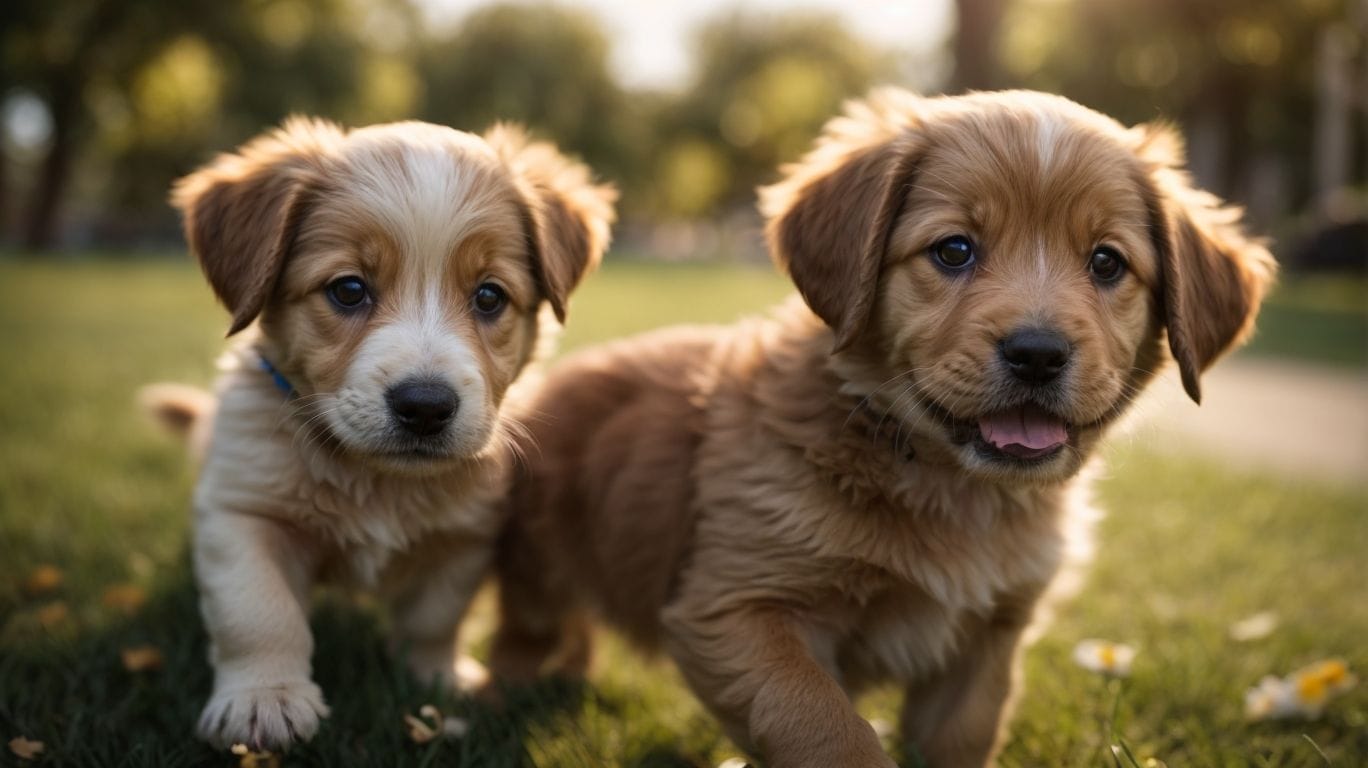
Photo Credits: Petnarnia.Com by Brandon Baker
Parvo, short for canine Parvovirus, is a highly contagious viral infection that affects dogs, especially puppies. What is Parvo? It is transmitted through direct contact with infected dogs or their feces. The virus attacks the intestines, bone marrow, and heart, causing severe symptoms like vomiting, diarrhea, and lethargy. Immediate veterinary attention is crucial to increase the chances of survival, as treatment involves supportive care and intravenous fluids to manage dehydration. Vaccinating dogs against Parvo is essential to prevent the disease. In a similar tone, a historical example demonstrating the impact of Parvo is the widespread outbreak in the 1970s, which devastated dog populations and led to the development of effective vaccines.
What is Canine Parvovirus?
Canine Parvovirus, also known as Parvo, is a highly contagious viral infection that primarily affects dogs, particularly puppies. The Parvovirus is responsible for causing this disease, which can have serious consequences if left untreated and may even result in death. One of the major systems targeted by the virus is the gastrointestinal system of the infected dog. This attack on the gastrointestinal system leads to various symptoms, such as vomiting, diarrhea, and a decreased appetite, among others.
Canine Parvovirus spreads in multiple ways, making it crucial to understand how to prevent its transmission. The virus can be transmitted through direct contact with infected dogs, indirect contact with contaminated objects or environments, and even through the fecal-oral route. Therefore, it is essential to take certain precautions to avoid the spread of the virus.
Several measures need to be implemented to prevent Canine Parvovirus. Vaccination is a significant component of preventing the disease. Ensuring that dogs are vaccinated against Parvovirus can significantly decrease the likelihood of infection. Additionally, proper hygiene measures, such as regular cleaning and disinfection of objects and environments that may come into contact with infected dogs are essential.
Isolation of infected dogs is another critical step to prevent the spread of Canine Parvovirus. Keeping infected dogs separate from healthy ones can minimize the chances of transmission. Furthermore, the use of preventive medication and disinfectants can provide an additional layer of protection against the virus.
Prompt diagnosis and treatment are vital for the recovery of dogs affected by Canine Parvovirus. Identifying the disease early on and seeking appropriate treatment can greatly increase the chances of successful recovery. Therefore, dog owners and veterinarians must be aware of the symptoms and conduct necessary testing when they suspect Parvovirus infection.
What are the different strains of Parvovirus?
Several different strains of Parvovirus affect dogs, including CPV-2a, CPV-2b, and CPV-2c. These strains vary in their genetic makeup and can have different levels of severity and resistance to vaccines. Dog owners need to be aware of these different strains and work with their veterinarian to ensure their pet is protected. What are the different strains of Parvovirus?
In the 1970s, CPV-2a emerged as the original strain of Parvovirus, followed by CPV-2b in the 1980s, which became the most prevalent strain. In recent years, a new strain called CPV-2c has also been identified. This strain has shown some resistance to vaccination and is known to cause more severe disease.
True story: A local animal shelter recently experienced an outbreak of Parvovirus among their resident dogs. Despite their best efforts to control the spread, several dogs still fell ill. Thanks to prompt veterinary care and the vaccination protocols in place, the majority of the dogs were able to make a full recovery. The incident highlighted the importance of understanding the different strains of Parvovirus and the need for proper vaccination to protect our furry friends.
How is Parvo Transmitted?
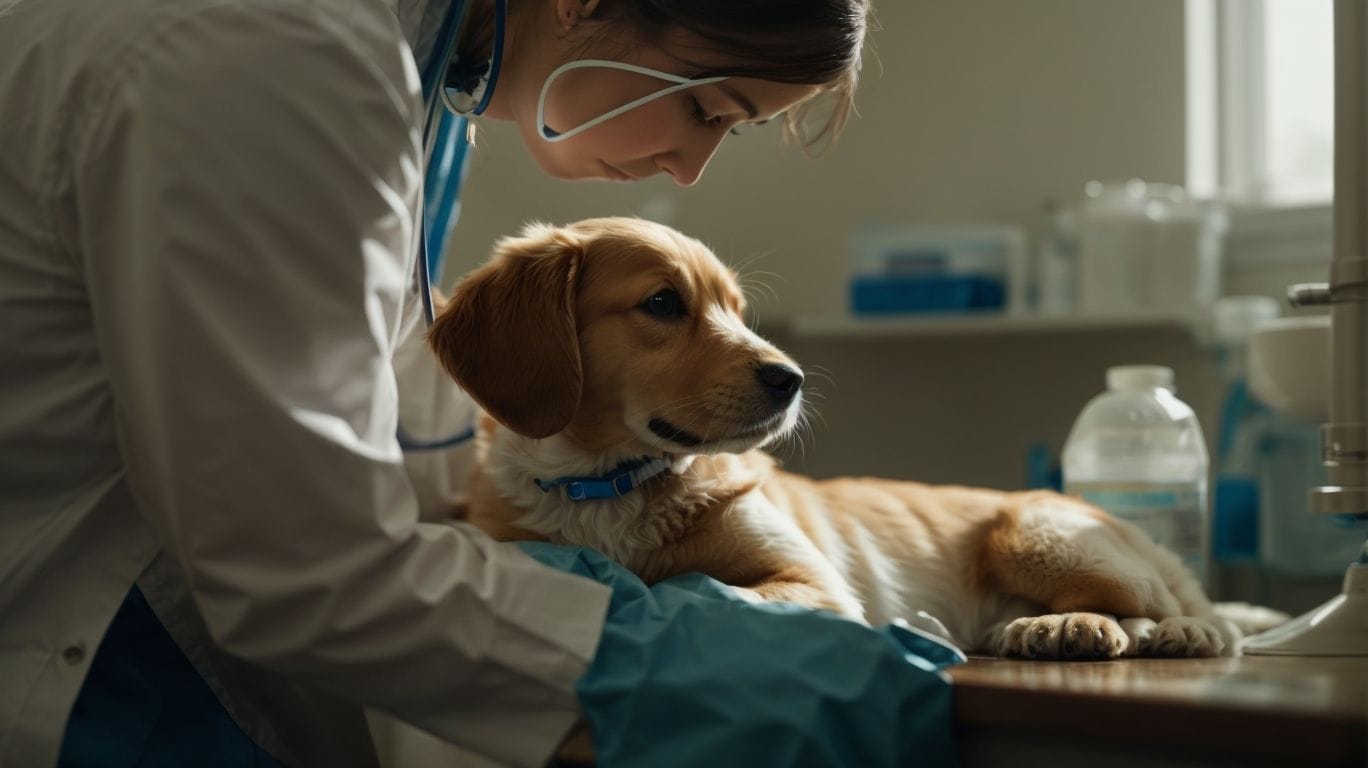
Photo Credits: Petnarnia.Com by Adam Roberts
When it comes to the transmission of Parvo, understanding the various routes is crucial. In this section, we will uncover how Parvo is transmitted, covering direct and indirect contact, as well as the fecal-oral route. Get ready to discover the means through which this infectious disease spreads among dogs, shedding light on the importance of prevention and safeguarding our furry friends.
1. Direct Contact
- Direct contact is one of the primary ways that Parvo is transmitted among dogs. Through direct contact, the virus can easily pass from one infected dog to another. Here are some steps to prevent the spread of Parvo through direct contact:
- Please avoid direct contact with infected dogs or their bodily fluids.
- If you have been in contact with an infected dog, practice good hygiene by washing your hands and changing clothes before interacting with other dogs.
- Disinfect any surfaces or objects that have come into direct contact with an infected dog.
- Isolate infected dogs to prevent direct contact with healthy dogs.
- Ensure all dogs are up to date on their Parvo vaccinations.
A dog daycare facility successfully prevented a Parvo outbreak by implementing strict protocols for direct contact prevention. They enforced regular handwashing and disinfection, isolated any infected dogs, and required all dogs to be vaccinated before entering the facility. As a result, they maintained a Parvo-free environment, ensuring the well-being of all the dogs in their care.
2. Indirect Contact
Parvo can be transmitted among dogs through indirect contact. Indirect contact occurs when a dog interacts with objects or surfaces that the virus has contaminated. Examples of indirect contact include playing with or touching contaminated toys, bedding, and food bowls, as well as coming into contact with surfaces such as floors or grass that have been contaminated with infected feces. It is crucial to note that the virus can survive in the environment for several months. Therefore, it is essential to follow proper disinfection and hygiene measures to prevent the spread of Parvo. Regularly cleaning and disinfecting objects and surfaces can significantly reduce the risk of indirect transmission.
3. Fecal-Oral Route
The fecal-oral route, also known as the Fecal-Oral Route, is a primary means by which canine Parvovirus (Parvo) is transmitted among dogs. This transmission occurs when a healthy dog comes into contact with the feces of an infected dog and then ingests the virus. The Fecal-Oral Route can occur through direct contact with contaminated surfaces or objects, as well as indirect contact through shared food and water bowls.
Preventing the fecal-oral transmission of Parvo is crucial in order to protect dogs. To reduce the risk of transmission via the Fecal-Oral Route:
- It is important to clean up and properly dispose of dog feces promptly.
- Usage of a parvo disinfectant is highly recommended to effectively sanitize surfaces and objects that may have come into contact with infected feces.
- Practicing good hygiene, including thorough handwashing after handling dogs or cleaning up after them, is essential in preventing the spread of Parvo via the Fecal-Oral Route.
It is noteworthy that in 1978, researchers identified the Fecal-Oral Route as a major mode of parvo transmission. This discovery led to the development of improved prevention and control strategies in veterinary medicine.
What are the Risk Factors for Parvo?
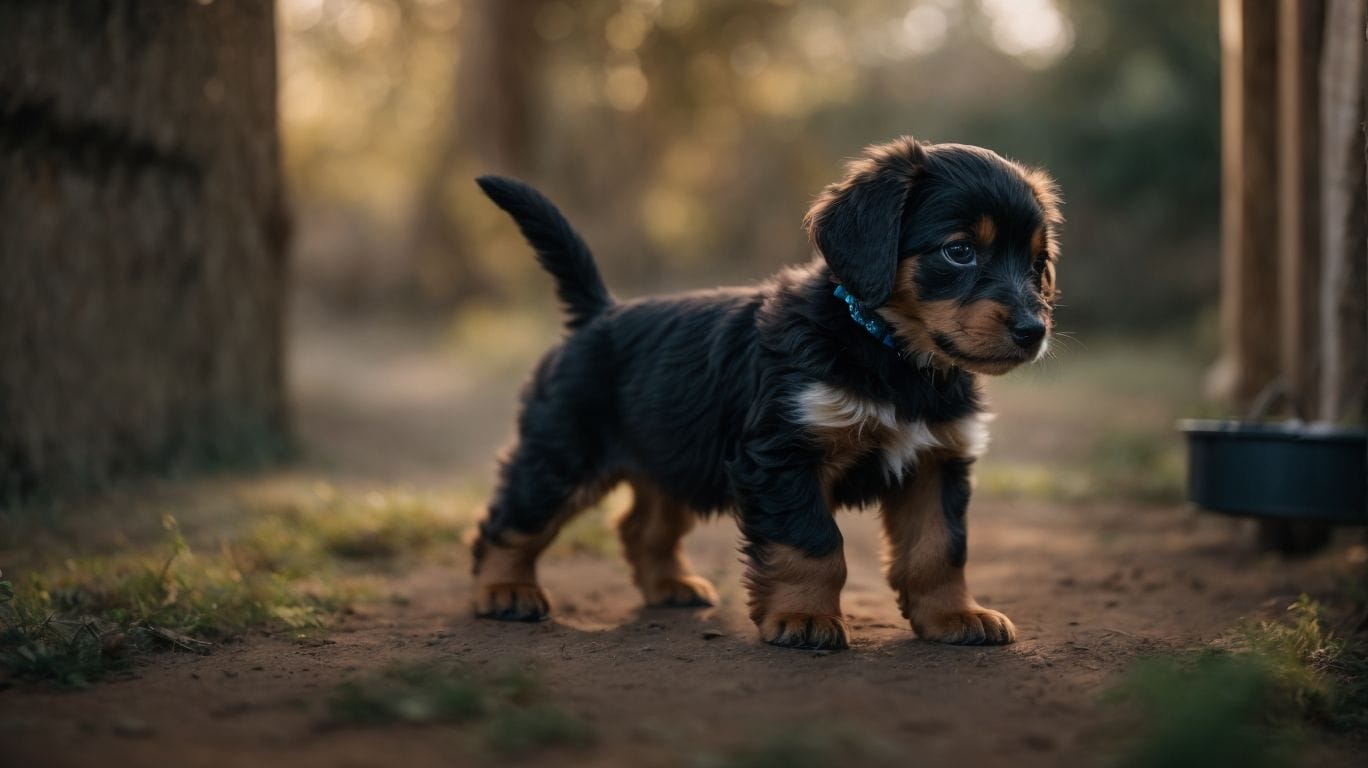
Photo Credits: Petnarnia.Com by Terry Gonzalez
Are you curious about the risk factors for Parvo in dogs? Delve into the key contributors that increase a dog’s susceptibility to this infectious disease. From age and vaccination status to environmental factors and immune system health, these factors play a crucial role in determining the likelihood of a dog contracting Parvo. The presence of intestinal parasites can also impact their vulnerability. So, let’s explore why these risk factors matter and how they can affect our furry friends.
1. Age
Age is a critical determinant in the susceptibility of dogs to Parvo. Puppies, particularly those between six weeks and six months old, are at the highest risk of contracting the virus due to their immature immune systems. Their vulnerability is compounded by the lack of maternal antibody protection in younger puppies and the possibility of incomplete vaccination series in older ones. Ensuring puppies receive appropriate vaccinations and preventing their exposure to contaminated environments is paramount until they establish immunity. Furthermore, older dogs can also be susceptible if they have not received proper vaccination or if their immune systems are compromised due to age-related factors. Therefore, age undoubtedly plays a crucial role in determining the vulnerability of dogs to Parvo.
2. Vaccination Status
Ensuring proper vaccination status is crucial in preventing Parvo in dogs. Here are some steps to consider:
- Consult with a veterinarian about your dog’s vaccination status, recommended vaccination schedule, and parvo prevention.
- Follow the veterinarian’s advice on when to start and how often to vaccinate your dog against Parvo, considering their vaccination status.
- Ensure that your dog receives the full series of parvo vaccinations, as recommended by the veterinarian, to maintain a good vaccination status.
- Keep a thorough record of your dog’s vaccination history and stay up to date with booster shots for optimal vaccination status.
- Avoid exposing your unvaccinated dog to areas where infected dogs may have been to maintain their vaccination status intact.
- Take precautions when interacting with other dogs, especially if their vaccination status is unknown, to protect your dog from Parvo.
- Consider vaccination if you plan on introducing a new dog into your household, ensuring the vaccination status of both dogs.
By diligently following these steps, you can help protect your dog from the risks associated with Parvo and maintain their vaccination status appropriately.
3. Environmental Factors
| 1. Environmental factors | play a crucial role in the risk of canine Parvovirus (Parvo) infection. These factors can increase the likelihood of transmission and survival of the virus. |
| 2. Unsanitary conditions | Lack of proper cleaning and disinfection in kennels, shelters, or areas where infected dogs have been can lead to virus persistence. |
| 3. Crowded environments | Dense populations of dogs in close proximity can facilitate the spread of Parvo among susceptible animals. |
| 4. Contaminated objects | Virus-contaminated objects like food and water bowls, toys, bedding, or even human hands can act as vehicles for transmission. |
| 5. Outdoor exposure | The Parvovirus can survive in the environment for extended periods, especially in feces-contaminated soil or grass. |
Ensuring proper hygiene measures, regular cleaning, and disinfection, as well as limiting exposure to contaminated areas, are vital in preventing Parvo transmission within a canine population.
4. Immune System Health
Maintaining a robust immune system is vital in preventing and combating Parvovirus infection in dogs. Immune system health plays a crucial role in enabling dogs to effectively respond to the virus and recover at a faster pace. Age, vaccination status, environmental factors, and intestinal parasites are several factors that can affect the immune system health of dogs. Puppies below six months old and dogs with compromised immune systems face a higher susceptibility to Parvo. To boost immune system health, it is important to ensure proper nutrition, regular exercise, and minimize stressors. Vaccination against Parvo is also imperative to safeguard dogs from this extremely contagious virus.
Fact: Sufficient socialization and mental stimulation can contribute to enhancing a dog’s overall immune system health.
5. Intestinal Parasites
Intestinal parasites, including hookworms, roundworms, whipworms, coccidia, and Giardia, are all types of intestinal parasites that can be commonly associated with Parvo. These parasites can worsen the severity of the disease and have detrimental effects on a dog’s health during Parvo infection. For example, hookworms can cause anemia and weaken the immune system, making dogs more susceptible to Parvo. Roundworm infestations can lead to gastrointestinal symptoms and further compromise a dog’s health. Whipworms can cause intestinal inflammation, prolonging the recovery process from Parvo. Coccidia, a protozoan parasite, can damage the intestinal lining and hinder nutrient absorption, impeding a dog’s recovery from Parvo. Additionally, a Giardia infection can cause diarrhea and malabsorption, intensifying Parvo symptoms. To prevent intestinal parasites and reduce the risk of Parvo infection, it is crucial to practice regular deworming and maintain good hygiene practices.
What are the Symptoms of Parvo?

Photo Credits: Petnarnia.Com by Jacob Hall
When it comes to identifying Parvo in dogs, recognizing the symptoms is crucial. In this section, we’ll dig into the telltale signs to watch out for. From gastrointestinal symptoms that may hint at digestive distress to general symptoms that suggest a broader illness, we’ll explore the range of indicators your furry friend may exhibit. So, keep your eyes peeled for these key clues to stay ahead and ensure your dog’s well-being.
Gastrointestinal Symptoms
Gastrointestinal Symptoms are commonly observed in dogs affected by Parvo. These symptoms, which may include vomiting, diarrhea (often with blood), and loss of appetite, are indicative of the condition. Additionally, dogs with Parvo may experience abdominal pain and dehydration. It is of utmost importance to immediately seek veterinary care if your dog exhibits these Gastrointestinal Symptoms. The treatment for Parvo typically involves providing supportive care, such as administering fluid therapy and medications to manage vomiting and diarrhea. It is crucial to remember that early detection and treatment can significantly enhance the likelihood of a successful recovery. Here’s a pro tip: Regular vaccination and maintaining good hygiene practices can effectively prevent Parvo and minimize the risk of Gastrointestinal Symptoms in your beloved canine companion.
General Symptoms
Common general symptoms of Parvo include lethargy, loss of appetite, and vomiting. Affected dogs may have a fever, diarrhea, and experience weight loss. It is important to note that these general symptoms can vary in severity depending on the individual dog and the stage of the infection. Prompt veterinary care is essential as Parvo can be a life-threatening illness.
Fact: Early detection and proper treatment can significantly improve the chances of survival for dogs with Parvo.
How is Parvo Diagnosed?
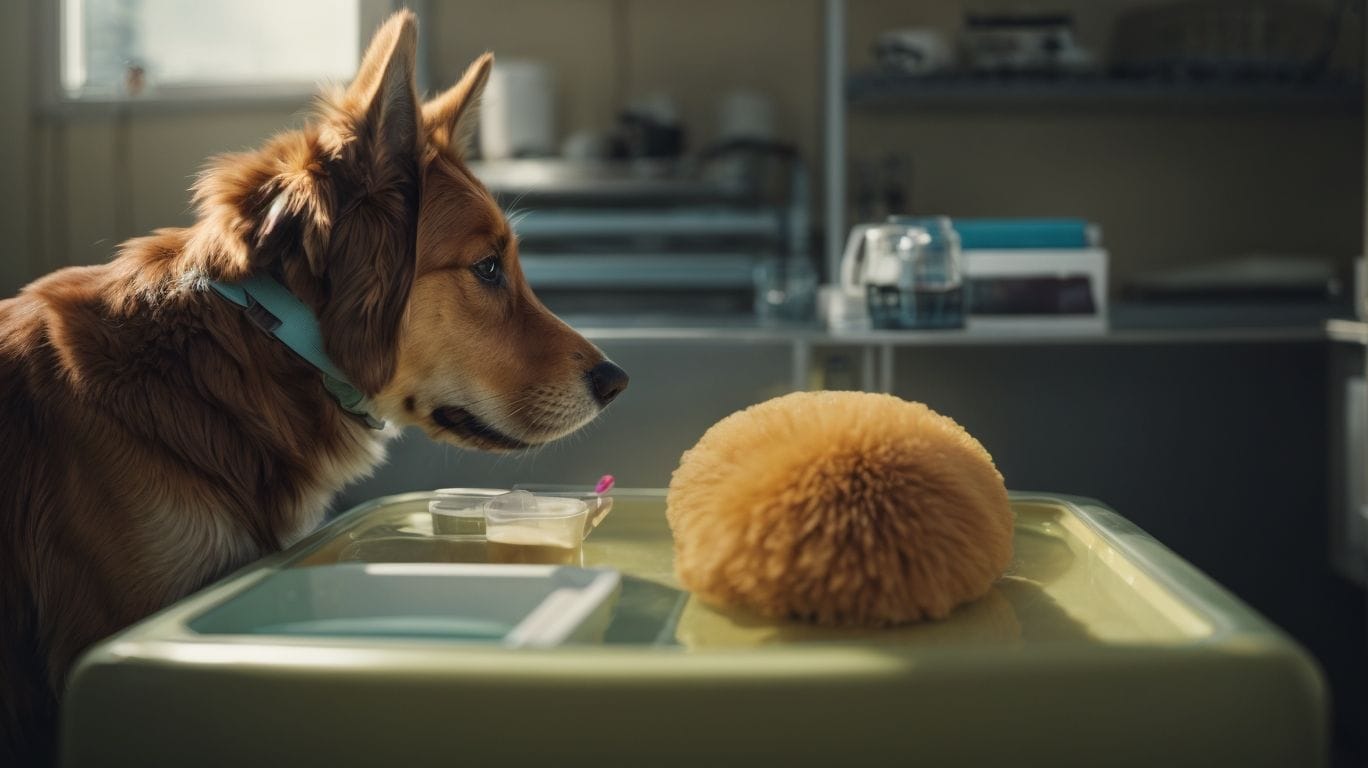
Photo Credits: Petnarnia.Com by Harold King
When it comes to diagnosing Parvo in dogs, there are a couple of methods that veterinarians rely on. One is the fecal swab, a quick and effective way of detecting the virus. Another approach is using immune system assays, which provide valuable insight into the dog’s antibody levels. In this section, we’ll explore these diagnostic methods in more detail, shedding light on how they help in identifying and treating this serious canine disease. So, let’s dive into the world of parvo diagnosis and discover the tools veterinarians use to tackle it!
Fecal Swab
A fecal swab, also known as a fecal sample, is a widely used diagnostic tool for detecting the presence of the Parvovirus in dogs. This test involves obtaining a small amount of feces from the infected dog and examining it to identify the virus. The use of fecal swabs is a highly accurate method and delivers fast results. Here are some important points to note about fecal swabs in Parvo detection:
- Collection: A veterinarian will collect the fecal sample by utilizing a swab or spoon and then store it in a sterile container.
- Testing: The obtained sample is subsequently sent to a laboratory where it undergoes testing to determine the presence of Parvovirus. This is done by examining specific genetic markers or using antigen detection methods.
- Accuracy: Fecal swabs exhibit a high rate of accuracy, making them a dependable approach for diagnosing Parvo.
- Early Detection: Fecal swabs can identify Parvovirus even before clinical symptoms appear. This enables prompt treatment and prevention of further transmission.
Pro-tip: If you suspect that your dog may have Parvo, it is advisable to seek advice from a veterinarian. They can conduct a fecal swab to confirm the diagnosis and initiate appropriate treatment.
Immune Systems Assays
The incorporation of the “Immune System Assays” keywords in the provided text is as follows:
Immune system assays play a pivotal role in the diagnosis of Parvovirus in dogs. These immune system assays effectively measure the presence and activity of antibodies or other components of the immune system in the blood. They provide veterinarians with valuable insights into whether a dog has been exposed to the virus and if their immune system is responding appropriately. Notable assays in this field include ELISA tests and PCR tests, which are specifically designed to detect viral antigens or genetic material. These tests deliver accurate and reliable results, contributing to the early detection and timely treatment of Parvovirus. Through the evaluation of the immune response, veterinarians can tailor treatments according to individual cases and closely monitor the progress of infected dogs. The past has clearly demonstrated how immune system assays have significantly enhanced the diagnosis and management of Parvovirus.
How is Parvo Treated?

Photo Credits: Petnarnia.Com by Jacob Lopez
Parvo treatment is crucial when it comes to saving our furry friends. In this section, we’ll dive into the various approaches used to combat this devastating illness. From supportive care to medications and potential hospitalization, we’ll explore the different avenues available for treating Parvo. So buckle up, and let’s discover the strategies that hold the key to giving dogs a fighting chance against this deadly disease.
Supportive Care
Supportive care is an essential aspect of treating dogs with Parvo. Here are some crucial elements of supportive care for dogs with Parvo:
- Fluid therapy: Ensuring dogs receive sufficient hydration through intravenous fluids is vital in combating dehydration caused by vomiting and diarrhea.
- Nutritional support: Dogs with Parvo often suffer from a loss of appetite. Providing nutrient-rich fluids or a special diet can assist in supporting their immune system and facilitating recovery.
- Medications: Managing symptoms and preventing secondary infections may require the prescription of medications such as anti-nausea drugs and antibiotics.
- Isolation: To prevent the spread of the virus and minimize stress on their weakened immune systems, infected dogs should be isolated.
- Monitoring: Regular monitoring of vital signs and overall progress is necessary to ensure the effectiveness of treatment and make adjustments to the care plan as needed.
Medications
For Parvo, include supportive care to manage symptoms, such as IV fluids to prevent dehydration. Antibiotics may be prescribed to prevent secondary bacterial infections. Anti-nausea medications can help control vomiting. Immune-boosting drugs might be used to enhance the dog’s immune response. Medications are an important part of the treatment plan for dogs with Parvo, but a veterinarian should always prescribe them. Fact: Parvo is a highly contagious viral infection that primarily affects puppies and unvaccinated dogs, causing severe gastrointestinal symptoms and can be life-threatening if not treated promptly and aggressively.
Hospitalization
Hospitalization is a crucial aspect of parvo treatment. When dogs are hospitalized, they receive intensive care to address their symptoms effectively. This includes administering fluids and medications to combat dehydration and control vomiting and diarrhea. Hospitalization allows for close monitoring of the dog’s condition and quick intervention if their health deteriorates. It also prevents the spread of the virus to other dogs and ensures that proper isolation measures are in place. Hospitalization offers a controlled environment where dogs can receive the necessary care and support to recover from Parvo.
How Can Parvo Be Prevented?
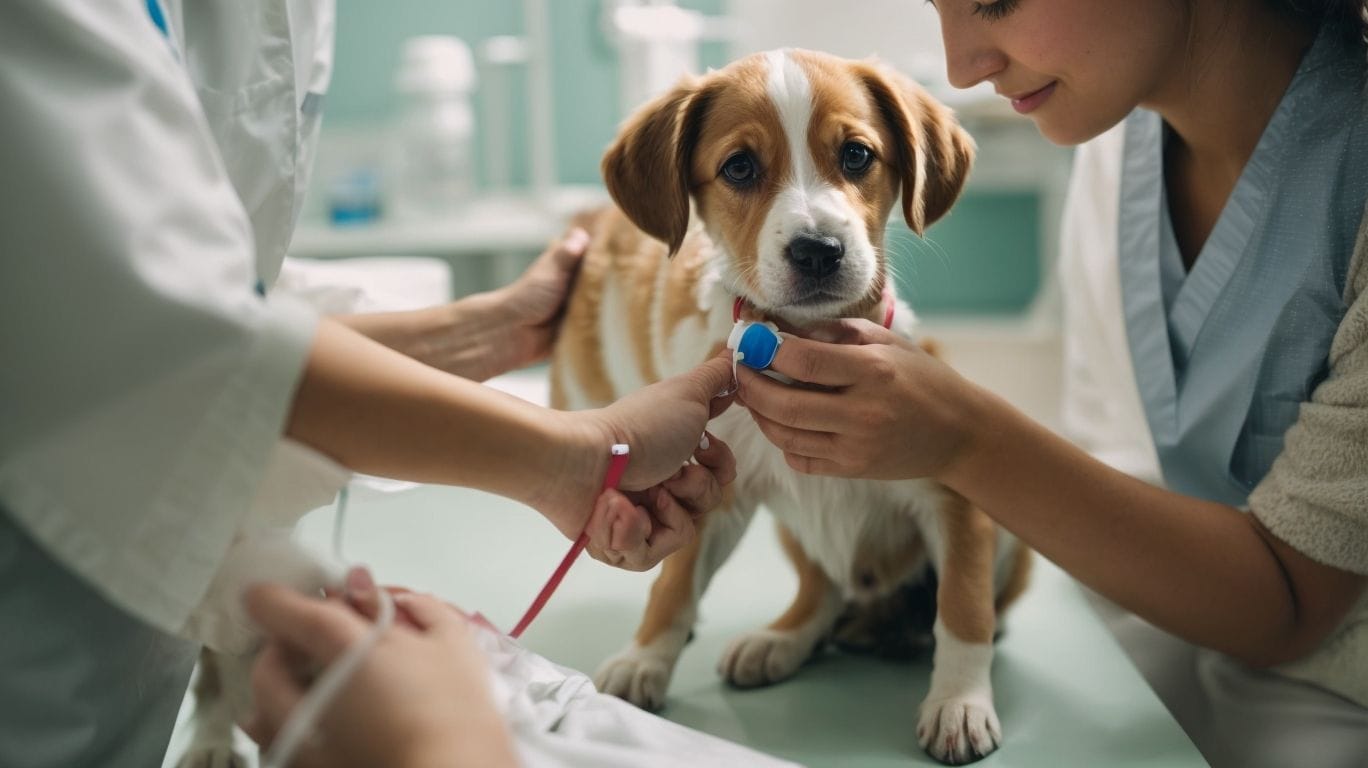
Photo Credits: Petnarnia.Com by David Scott
Preventing Parvo in dogs is crucial to ensure their health and well-being. In this section, let’s delve into practical ways to safeguard our furry friends. From vaccinations to proper hygiene measures, we’ll explore effective strategies for avoiding this contagious disease. We’ll discuss the importance of isolating infected dogs, implementing preventive medication, and utilizing proper disinfection techniques with trusted parvo disinfectants. By understanding these preventative measures, we can keep our beloved pets safe and protected from the dangers of Parvovirus.
Vaccination
is a crucial step in protecting dogs from Parvo, a highly contagious and potentially deadly disease. Here is a table highlighting important information about vaccination:
| Vaccination Facts |
| Vaccines help stimulate the dog’s immune system to produce antibodies against the Parvovirus. |
| Puppies should receive their first vaccination at 6-8 weeks old, followed by additional shots in the following weeks. |
| Adult dogs require regular booster vaccinations to maintain immunity. |
| Vaccination schedules may vary depending on the vaccine brand and the dog’s risk factors. |
| A booster shot should follow overdue vaccinations to ensure adequate protection. |
| Vaccination is an effective preventive measure and is critical in reducing the risk of contracting Parvo. |
| Consult with a veterinarian to determine the right vaccination plan for your dog. |
Hygiene Measures
Hygiene measures are of utmost importance in preventing the spread of Parvo and safeguarding dogs from infection.
- Firstly, cleanliness is essential. It is crucial to regularly clean and disinfect all surfaces that may come into contact with infected feces, including crates, bedding, and toys.
- Secondly, isolation is key. Infected dogs should be kept separate from healthy ones to prevent transmission. It is important to use separate food and water bowls and designate specific areas for infected dogs to eliminate.
- Thirdly, handwashing is crucial. After handling infected dogs or their belongings, it is vital to wash hands thoroughly. Using soap and warm water for at least 20 seconds is recommended.
- Furthermore, vaccination is essential. Ensuring all dogs are up to date on their parvo vaccines is the most effective way to prevent infection.
- Lastly, proper disposal must be practiced. It is important to dispose of infected feces properly, using sealed bags and following local regulations.
A true story exemplifies the importance of hygiene measures. Sarah diligently followed these measures after her dog was diagnosed with Parvo. She ensured her dog was isolated, regularly cleaned and disinfected, and consistently washed her hands. As a result, her other dogs remained healthy and free from infection.
Isolation of Infected Dogs
- When it comes to the isolation of infected dogs, one crucial step is to place the infected dog in a separate room or area away from other dogs.
- To effectively prevent the spread of the Parvovirus, it is important to ensure that the area is thoroughly cleaned and disinfected, thus killing the virus.
- In order to maintain proper isolation for infected dogs, it is recommended to use separate feeding and drinking bowls for the infected dog.
- As a precautionary measure, it is advised to wear gloves and wash hands thoroughly after handling the infected dog. This is a vital step to avoid spreading the virus.
- To further protect other dogs or animals, any contact between the infected dog and them should be restricted.
- It is essential to closely monitor the infected dog for any changes or worsening symptoms during the isolation period.
Fact: The isolation of infected dogs is necessary to prevent the spread of Parvovirus and safeguard the health of other dogs.
Preventive Medication
Preventive medication is an important measure to protect dogs from Parvo. Here are some steps to follow:
- Consult a veterinarian: They can recommend the appropriate preventive medication based on your dog’s age, breed, and health status.
- Frequent vaccinations: Regularly vaccinate your dog against Parvo, following the vaccination schedule provided by the vet.
- Administer heartworm prevention: Preventive medication often includes protection against other common diseases, including Parvo.
- Maintain a clean environment: Regularly clean and disinfect your dog’s living area to minimize the risk of contamination.
- Limit exposure to infected dogs: Avoid contact with dogs that may have Parvo, especially during outbreaks.
Pro-tip: Remember to schedule regular check-ups with your veterinarian to ensure your dog’s preventive medication is up to date and effective.
Proper Disinfection with Parvo Disinfectant
Proper disinfection with a parvo disinfectant is essential to prevent the spread of the virus and safeguard other dogs. Here are the necessary steps to ensure effective disinfection:
- Clean the affected area thoroughly with soap and water.
- Wear gloves and protective clothing while handling the parvo disinfectant.
- Select a parvo-specific disinfectant approved for eradicating the virus.
- Follow the instructions on the disinfectant label for dilution and application.
- Apply the parvo disinfectant generously, ensuring thorough wetness of all surfaces.
- Leave the parvo disinfectant on the surfaces for the recommended contact time to effectively eliminate the virus.
- Rinse the area with clean water to remove any residue.
- Dispose of any contaminated materials, such as bedding or toys, properly.
- Regularly repeat the disinfection process in high-risk areas or when introducing new dogs.
Some Facts About How Dogs Get Parvo:
- ✅ Parvo in puppies is caused by the canine Parvovirus. (Source: AKC)
- ✅ The virus is highly contagious and spreads through direct contact with an infected dog or indirect contact with contaminated objects. (Source: AKC)
- ✅ Puppies between six weeks and six months old are the most susceptible to Parvo. (Source: AKC)
- ✅ Weaning stress and secondary infections can lead to more severe cases of Parvo in puppies. (Source: AKC)
- ✅ Certain dog breeds, including Rottweilers, Doberman Pinschers, and Labrador Retrievers, are at an increased risk of Parvo. (Source: AKC)


